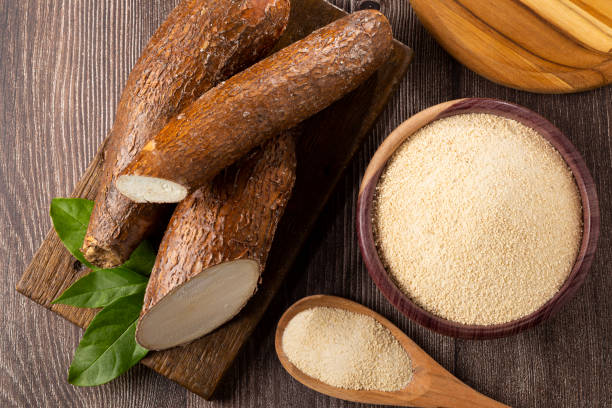
Cassava and Yuca—Are They the Same?
- By Daily Harvest
- Updated: January 2025

Cassava is a nutty-flavored, starchy vegetable in the root and tuber family. Other vegetables in this group include potatoes, sweet potatoes, taro, and yams. Cassava is high in both carbohydrates and calories compared with other vegetables, and it is a staple crop in many cultures across the globe.

Cassava is also called yuca, manioc, Manihot esculenta, or Brazilian arrowroot. The term Brazilian arrowroot can be confusing, as cassava is not used to make arrowroot starch, which comes from West Indian arrowroot or Maranta arundinacea.
On the other hand, tapioca is a starch extracted from cassava root, and tapioca flour is made from cassava root.
The name yuca is commonly confused with yucca, which is not a root vegetable but an evergreen shrub and is entirely different from cassava. Make sense?
Cassava root can be cooked and eaten as a starchy side - similar to mashed or roasted potatoes - and it’s also used to make different types of flours.
Cassava flour is made from the whole root of the cassava plant. Just like cassava root, cassava flour is gluten-free and grain-free, making it an excellent alternative to wheat flours for people who cannot tolerate gluten. Cassava flour is widely used in gluten-free baking and it can be used as a gluten-free substitute for breadings or breadcrumbs. The Daily Harvest Flatbread collection utilizes cassava flour to create nutritious gluten-free crusts.
Tapioca starch, which is the same thing as tapioca flour, can be used in gluten-free baking, or as a thickener in soups and stews.
We take care of food so food can take care of you. Stock up on our deliciously nourishing cassava-based bestsellers on daily-harvest.com.
+
Important Notes: Unless otherwise noted, nutrition information is sourced from USDA FoodData Central and reflects the reference amount customarily consumed. These are standardized servings and not necessarily the amount present in the highlighted Daily Harvest recipes. Nutrition information for Daily Harvest products can be found on packages and under "Nutrition Facts" for each product at "dailyharvest.com". Vitamin and mineral functions are sourced from Linus Pauling Institute Micronutrient Information Center.
When would you like your next delivery?
Note On Your Existing Order
Order #{{number}} for your most recent box has already been processed and is still scheduled to arrive {{date}}.
I understand Save CancelYour subtotal must be above $50 for the box to ship. Add your replacement item(s) and then try deleting these again.
Loading...